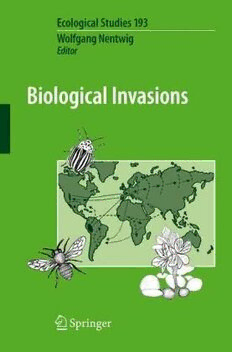
Biological Invasions (Ecological Studies, Vol. 193) PDF
516 Pages·2008·5.185 MB·English
Most books are stored in the elastic cloud where traffic is expensive. For this reason, we have a limit on daily download.
Preview Biological Invasions (Ecological Studies, Vol. 193)
Description:
This new volume on Biological Invasions deals with both plants and animals, differing from previous books by extending from the species to an ecosystem and global level. Its 22 chapters cover pathways of biological invasions (e.g. ballast water, waterways), traits of successful invaders (e.g. chemical weapons, empty niches), patterns of invasion and invasibility (e.g. man-induced predisposition by fire, land use and eutrophication, the role of climate change) as well as ecological impacts (e.g. food web shifts, genetic pollution), economy and socio-economy (e.g. ecosystem services and monetary valuation), and prevention and management of biological invasions (e.g. phytosanitary measures, biological control, particularly in view of globalisation). Topics of highest societal relevance, like impact of genetically modified organisms, are interlinked with more conventional ecological aspects, including biodiversity. The combination of these approaches is new and will make compelling reading for the public sector, too.
See more
The list of books you might like
Most books are stored in the elastic cloud where traffic is expensive. For this reason, we have a limit on daily download.
